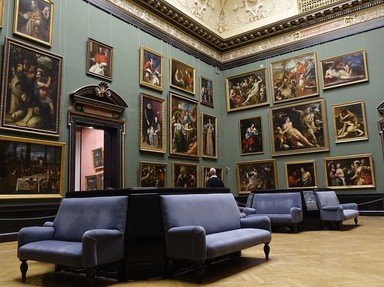Quiz Answer Key and Fun Facts
1. This spectacular gold comb is one of the most famous pieces in the Hermitage Museum's collection of gold artifacts produced by what ancient Indo-European civilization, which flourished in the steppes north of the Black Sea?
2. The Gonzaga Cameo, depicted here on a Russian stamp, is a stunning example of Hellenistic glyptic art. The original owners of the cameo, the Gonzaga family, were from which European country?
3. The Hermitage's large collection of religious icons includes works from different countries and eras. This stately medieval image represents which widely venerated saint, a bishop and martyr whose feast is celebrated on 6 December?
4. The beautiful "Madonna Litta" is undoubtedly one of the "stars" of the Hermitage's vast collection of paintings. To which great Italian artist - the ultimate Renaissance man - has it been traditionally attributed?
5. Painted in 1617, "Luncheon" is one of the earliest works of which great Spanish artist, the leading painter of the Spanish Golden Age?
6. A whole room in the New Hermitage building is devoted to the works of Rembrandt van Rijn and his followers. In this beautiful painting, a lady named Saskia van Uylenburg is portrayed as Flora, the Roman goddess of spring. Who was she in relation to Rembrandt?
7. This lovely, elegant portrait of a "Woman in Blue" is the work of which famous 18th-century English artist, known for his painting of another blue-clad person?
8. This celebrated sculpture by Italian Neoclassical artist Antonio Canova shows a trio of Greek goddesses, a popular subject in art, known by what name?
9. The Hermitage is also the proud owner of a renowned collection of works by French Impressionist painters. This lovely painting by Claude Monet depicts the meadows around his house, located in which town in northern France?
10. Our tour of the Hermitage ends with a stunning abstract painting, titled "Composition VI", by one of the greatest artists of the first half of the 20th century. Which Russian painter and art theorist, one of the founders of the "Blue Rider" group, am I talking about?
Source: Author
LadyNym
This quiz was reviewed by FunTrivia editor
looney_tunes before going online.
Any errors found in FunTrivia content are routinely corrected through our feedback system.
